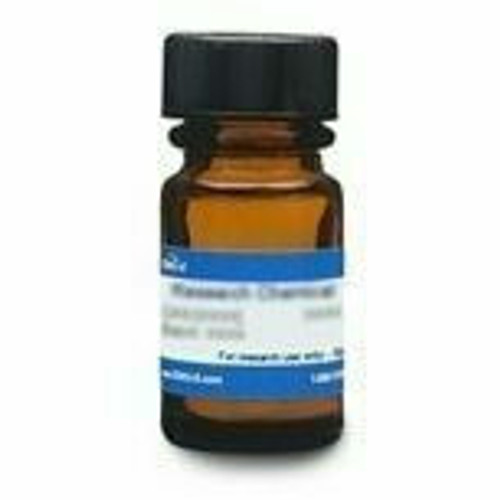Pradofloxacin is a third-generation enhanced spectrum antibiotic belonging to the Fluoroquinolone class, specifically 8-cyano-fluoroquinolone. It was developed by Bayer Healthcare in 1994 to improve upon the efficacy against Gram-positive and anaerobic pathogens compared to previous generation fluoroquinolones while delivering the same Gram-negative activity. The compound is used for in vitro veterinary research applications.
| Mechanism of Action | Fluoroquinolones impact DNA functions such as replication, transcription and recombination. The primary target is bacterial DNA gyrase and topoisomerase IV resulting in enzyme inhibition and resultant bacterial cell death. The extent of the killing is proportional to the compound concentration. |
| Molecular Formula | C21H21FN4O3 |
| Spectrum |
Pradofloxacin is broad-spectrum activity against Gram-positive, Gram-negative bacteria including aerobic and anaerobic bacteria. It has shown efficacy against pathogens responsible for UTI infections, skin infections, and bronchitis. |
| Microbiology Applications |
Pradofloxacin has activity against common veterinary pathogens. It also has activity against some mycobacteria. Susceptibility data should be used in order to prevent acquired resistance, as this compound has been shown to have a high level of resistance among bacteria. Pharmacokinetic studies were done involving serum analysis, ultrafiltration methods at infection site and ultrafiltration approach was very sensitive to estimate the pharmacokinetic values of Pradofloxacin at the infection site (Hauschild et al, 2013). Pradofloxacin is commonly used in clinical in vitro microbiological antimicrobial susceptibility tests (panels, discs, and MIC strips) against Gram-positive and Gram-negative microbial isolates. Medical microbiologists use AST results to recommend antibiotic treatment options. For a representative list of Pradofloxacin MIC values, click here. The compound has lower MIC values than other quinolones against clinically important Gram-positive pathogens and equal to lower MIC and MPC values against E. coli and other Gram-negative bacilli when compared with other quinolones (Sykes and Blondeau, 2014). |
| References |
Hauschild G et al (2013) Pharmacokinetic study on Pradofloxacin in the dog – Comparison of serum analysis, ultrafiltration and tissue sampling after oral administration. BMC Vet Res 9:32 Liu X, Lazzaroni C, Aly SA, Thungrat K, Boothe DM (2014) In vitro selection of resistance to Pradofloxacin and ciprofloxacin in canine uropathogenic Escherichia coli isolates. Vet Microbiol. 174(3-4):514-522 PMID: 25465666 Silley P, Stephan B, Greife HA, Pridmore A (2012) Bactericidal properties of Pradofloxacin against veterinary pathogens. Vet Microbiol. 157(1-2):106-11 PMID 22209121 Sykes JE and Blondeau JM (2014) Pradofloxacin: a novel veterinary fluoroquinolone for treatment of bacterial infections in cats. Vet J. 201(2):207-214. PMID 24997792 |


